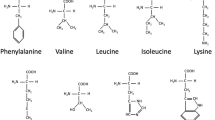Abstract
This study reassesses the proposal that cellular conditions of low temperature and relative acidosis during hibernation contribute to a suppression of phosphofructokinase (PFK) activity which, in turn, contributes to glycolytic rate suppression during torpor. To test the proposal that a dilution effect during in vitro assay of PFK was the main reason for activity loss (tetramer dissociation) at lower pH values, the influence of the macromolecular crowding agent, polyethylene glycol 8000 (PEG), on purified skeletal muscle PFK from Spermophilus lateralis was evaluated at different pH values (6.5, 7.2 and 7.5) and assay temperatures (5, 25 and 37°C). A 78 ± 2.5% loss of PFK activity during 1 h incubation at 5°C and pH 6.5 was virtually eliminated when 10% PEG was present (only 7.0 ± 1.5% activity lost). The presence of PEG also largely reversed PFK inactivation at pH 6.5 at warmer assay temperatures and reversed inhibitory effects by high urea (50 or 400 mM). Analysis of pH curves at 5°C also indicated that ~ 70% of activity would remain at intracellular pH values in hibernator muscle. The data suggest that under high protein concentrations in intact cells that the conditions of relative acidosis, low temperature or elevated urea during hibernation would not have substantial regulatory effects on PFK.
Similar content being viewed by others
References
Hochachka PW, Somero GN: Biochemical Adaptation. Princeton University Press, Princeton, NJ, 1984
Kemp RG, Foe LG: Allosteric regulatory properties of muscle phosphofructokinase. Mol Cell Biochem 57: 147–154, 1983
Benoit MA, Debauche P, Devos P: Phosphofructokinase from the posterior gills of the euryhaline crab, Eriocheir sinensis: Evidence for its regulation by phosphorylation. J Comp Physiol B 164: 165–171, 1994
Brooks SPJ, Storey KB: A quantitative evaluation of the effect of enzyme complexes on the glycolytic rate in vivo: Mathematical modeling of the glycolytic complex. J Theor Biol 149: 361–375, 1991
Brooks SPJ, Storey KB: Re-evaluation of the ‘glycolytic complex’ in muscle: A multi-technique approach using trout white muscle. Arch Biochem Biophys 267: 13–22, 1988
Bickler PE: CO2 balance of a heterothermic rodent: Comparison of sleep, torpor, and awake states. Am J Physiol 246: R49–R55, 1984
Malan A: Respiration and acid-base state in hibernation. In: C.P. Lyman, J.S. Willis, A. Malan, L.C.H. Wang (eds). Hibernation and Torpor in Mammals and Birds. Academic Press, New York, 1982, pp 273–282
Malan A, Rodeau JL, Daull F: Intracellular pH in hibernation and respiratory acidosis in the European hamster. J Comp Physiol B 156: 251–258, 1985
Malan A, Mioskowski E, Calgari C: Time-course of blood acid-base state during arousal from hibernation in the European hamster. J Comp Physiol B 158: 495–500, 1988
Hand SC, Somero GN: Phosphofructokinase of the hibernator Citellus beecheyi, temperature and pH regulation of activity via influences on the tetramer-dimer equilibrium. Physiol Zool 56: 380–388, 1983
Bock PE, Frieden C: Phosphofructokinase: Mechanism of the pH-dependent inactivation and reactivation of the rabbit muscle enzyme. J Biol Chem 251: 5630–5636, 1976
Bock PE, Frieden C: Phosphofructokinase: Role of ligands in pH-dependent structural changes of the rabbit muscle enzyme. J Biol Chem 251: 5637–5643, 1976
Frank CL, Storey KB: Optimal depot fat composition for hibernation by golden-mantled ground squirrels (Spermophilus lateralis). J Comp Physiol B 164: 536–542, 1995
Ramadoss CS, Luby LJ, Uyeda K: Affinity chromatography of phosphofructokinase. Arch Biochem Biophys 175: 487–494, 1976
Brooks SPJ, Storey KB: Mechanisms of glycolytic control during hibernation in the ground squirrel Spermophilus lateralis. J Comp Physiol B 162: 23–28, 1992
Helmerhost E, Stokes HH: Microcentrifuge desalting: A rapid, quantitative method for desalting small amount of protein. Anal Biochem 104: 130–135, 1980
Brooks SPJ: A program for analyzing enzyme rate data obtained from a microplate reader. BioTechniques 17: 1155–1161, 1994
Brooks SPJ: A simple computer program with statistical tests for the analysis of enzyme kinetics. BioTechniques 13: 906–911, 1992
Bradford MM: A rapid and sensitive method for the quantitation of microgram quantities of protein utilizing the principle of protein-dye binding. Anal Biochem 72: 248–254, 1976
Ling KH, Paetkan V, Marcus F, Lardy HA: Phosphofructokinase I. Skeletal muscle. Meth Enzymol 9: 425–430, 1966
Lee JC, Lee LLY: Interaction of calf brain tubulin with poly(ethylene glycols). Biochemistry 18: 5518–5526, 1979
Kristofferson R: Urea levels in blood and tissues of hibernating and nonhibernating hedgehogs. Nature 197: 402–403, 1963
Riedesel ML, Steffen JM: Protein metabolism and urea recycling in rodent hibernators. Fed Proc 39: 2959–2963, 1980
Hochachka PW, Guppy M: Metabolic Arrest and the Control of Biological Time. Harvard University Press, Cambridge, MA, 1987
McArthur MD, Hanstock CC, Malan A, Wang LCH, Allen PS: Skeletal muscle pH dynamics during arousal from hibernation measured by 31P NMR spectroscopy. J Comp Physiol B 160: 339–347, 1990
Fulton AB: How crowded is the cytoplasm? Cell 30: 345–347, 1982
Reinhart GD: Influence of polyethylene glycols on the kinetics of rat liver phosphofructokinase. J Biol Chem 255: 10576–10578, 1980
Bosca L, Aragon JJ, Sols A: Modulation of muscle phosphofructokinase at physiological concentration of enzyme. J Biol Chem 260: 2100–2107, 1985
Hand SC, Somero GN: Urea and methylamine effects on rabbit muscle phosphofructokinase. Catalytic stability and aggregation state as a function of pH and temperature. J Biol Chem 257: 734–741, 1982
Author information
Authors and Affiliations
Corresponding author
Rights and permissions
About this article
Cite this article
MacDonald, J.A., Storey, K.B. Reassessment of the cold‐labile nature of phosphofructokinase from a hibernating ground squirrel. Mol Cell Biochem 225, 51–57 (2001). https://doi.org/10.1023/A:1012264723657
Issue Date:
DOI: https://doi.org/10.1023/A:1012264723657




